-
×
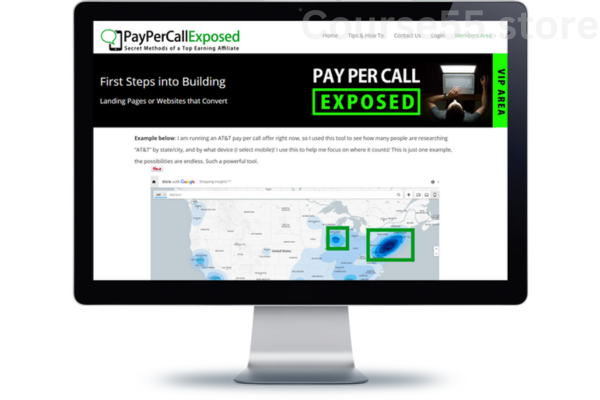 Pay Per Call Exposed By Raj
1 × $23.10
Pay Per Call Exposed By Raj
1 × $23.10 -
×
 Options Foundations Class by Dan Sheridan
1 × $23.10
Options Foundations Class by Dan Sheridan
1 × $23.10 -
×
 Nearing the End of Life: Dare to Care By Nancy Joyner - PESI
1 × $23.10
Nearing the End of Life: Dare to Care By Nancy Joyner - PESI
1 × $23.10 -
×
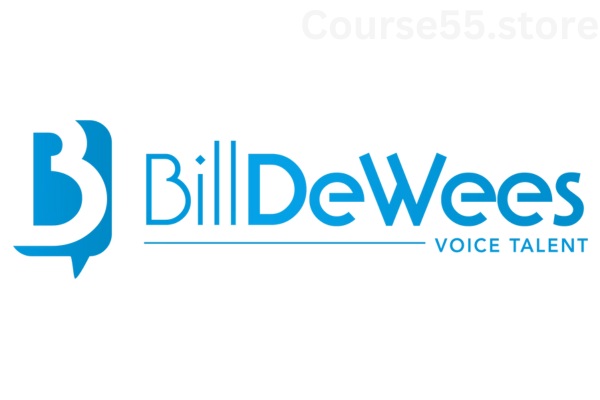 Voice Over Revolution By Bill DeWees
1 × $23.10
Voice Over Revolution By Bill DeWees
1 × $23.10 -
×
 Million Dollar Joint Ventures Express by Bob Serling
1 × $23.10
Million Dollar Joint Ventures Express by Bob Serling
1 × $23.10 -
×
 Applied Wing Chun - Lesson 005 - Covering and Hitting By Larry Saccoia
1 × $8.00
Applied Wing Chun - Lesson 005 - Covering and Hitting By Larry Saccoia
1 × $8.00 -
×
 Video Convert Formula (FB VIDEO ADS + SHOPIFY) by Charlie Kim
1 × $23.10
Video Convert Formula (FB VIDEO ADS + SHOPIFY) by Charlie Kim
1 × $23.10 -
×
 Postural Respiration 2017 by Postural Restoration Institute
1 × $23.10
Postural Respiration 2017 by Postural Restoration Institute
1 × $23.10 -
×
 Live and Luxurious by Gina Devee
1 × $23.10
Live and Luxurious by Gina Devee
1 × $23.10 -
×
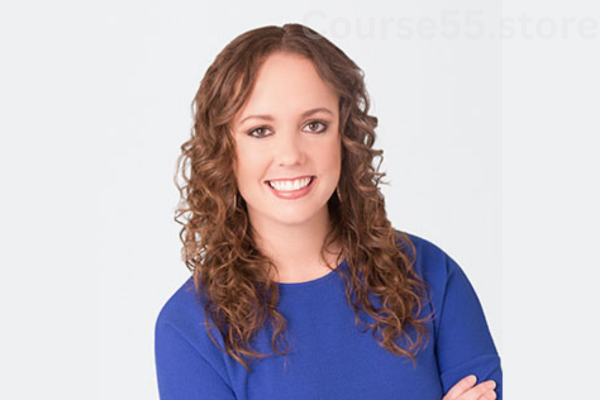 How to Build an Engaging Facebook Messenger Bot That Converts Traffic Into Sales by Molly Pittman
1 × $23.10
How to Build an Engaging Facebook Messenger Bot That Converts Traffic Into Sales by Molly Pittman
1 × $23.10 -
×
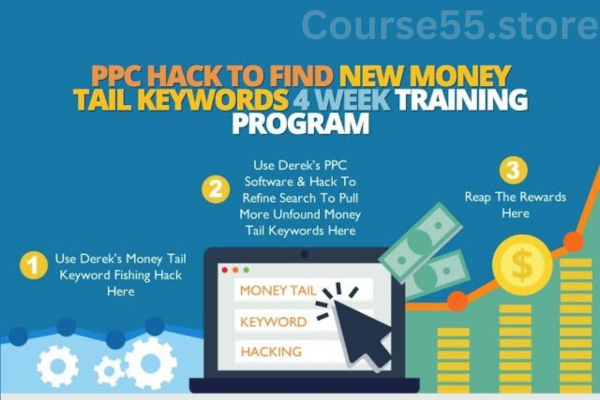 PPC Keywords - PPC 4SEO By Derek Booth - SEO Intelligence Agency
1 × $23.10
PPC Keywords - PPC 4SEO By Derek Booth - SEO Intelligence Agency
1 × $23.10 -
×
 Divi Business Expert Course By Tim Strifler & David Blackmon - WPGears
1 × $23.10
Divi Business Expert Course By Tim Strifler & David Blackmon - WPGears
1 × $23.10 -
×
 Applied Wing Chun - Lesson 002 - Sil Lum Tao (Part 2) By Larry Saccoia
1 × $8.00
Applied Wing Chun - Lesson 002 - Sil Lum Tao (Part 2) By Larry Saccoia
1 × $8.00 -
×
 Applied Wing Chun - Lesson 003 - Yee Jee Kim Yeung Ma By Larry Saccoia
1 × $8.00
Applied Wing Chun - Lesson 003 - Yee Jee Kim Yeung Ma By Larry Saccoia
1 × $8.00 -
×
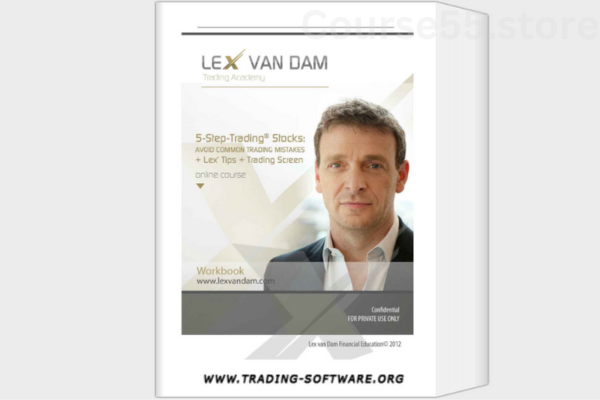 5-Step-Trading Stocks II - Avoid Common Trading Mistakes by Lex van Dam
1 × $23.10
5-Step-Trading Stocks II - Avoid Common Trading Mistakes by Lex van Dam
1 × $23.10 -
×
 Pranayama 101 By Tias Little
1 × $6.00
Pranayama 101 By Tias Little
1 × $6.00
Pricing Creativity – A Guide To Profit Beyond Billable Hours By Blair Enns
$320.00 Original price was: $320.00.$23.10Current price is: $23.10.
SKU: C55store.6122fzRnnLgS
Category: Download
Tags: Blair Enns, Pricing Creativity, Profit Beyond Billable Hours
Pricing Creativity – A Guide To Profit Beyond Billable Hours By Blair Enns – Digital Download!
Content Proof:
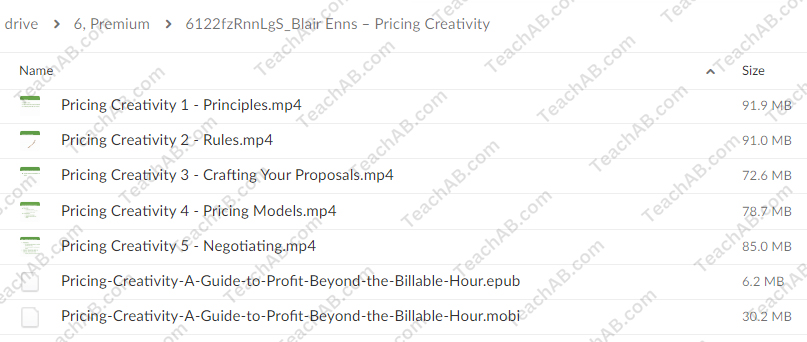
Pricing Creativity – A Guide To Profit Beyond Billable Hours By Blair Enns
Overview:
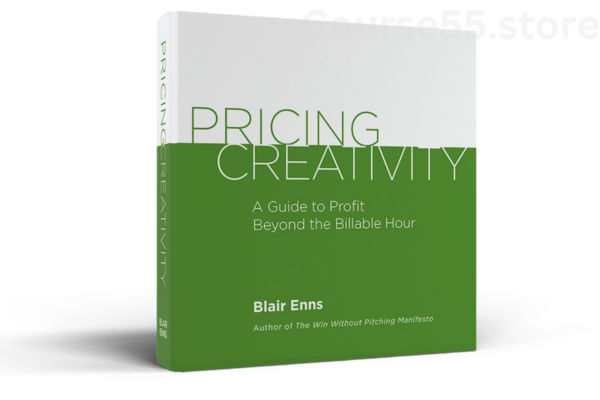
Creative pricing: A manual for making money outside of billable hours
The conventional hourly billing approach can frequently result in poor revenues and lost chances in the fast-paced world of creative services. “Pricing Creativity: A Guide to Profit Beyond Billable Hours,” written by Blair Enns, explores how creative workers might switch from traditional billing to value-based pricing. In addition to bringing creative work into line with its actual value in the market, this shift offers more profitability. Enns offers practical ideas and insights that enable creatives to recognize their worth and make the most of it, which eventually transforms how they handle client interactions and negotiations.
Comprehending value-based pricing
The fundamental transition from hourly billing to value-based pricing is one of the main ideas that Enns presents. This model highlights that rather than the number of hours invested on a project, price should represent the value provided to clients. Although it has long been the norm in the creative sector, the typical hourly billing technique naturally restricts revenues. Creative people frequently undervalue their work when they charge by the hour. Enns contends that creatives can realize their full potential for increased financial independence and fulfillment by adopting value-based pricing.
Take two graphic designers, for example. While the second uses value-based pricing and focuses on the effect their designs have on their clients’ businesses, the first charges a standard hourly cost. Regardless of the outcome, the first designer will make $500 if they work on a project for ten hours at $50 per hour. As an illustration of the substantial value that is delivered, a value-focused designer who assists a client in raising sales or brand awareness can bill $2,000 for the same assignment. This paradigm shift demonstrates how a more successful and sustainable company model can result from knowing one’s value in connection to the needs of clients.
The six rules of effective pricing
Enns outlines six rules that serve as a framework for effective pricing strategies. These guidelines are designed to help creatives navigate pricing discussions to maximize their profitability and client satisfaction. The first rule is to comprehend the client’s context and specific needs, enabling a better assessment of the value to deliver. By engaging clients in conversation and understanding their objectives before discussing pricing, creatives can position themselves more favorably.
Anchoring prices
Presenting clients with a variety of pricing options is the subject of the second rule. In addition to giving customers transparency, this strategy motivates them to assess the perceived worth of your offerings rather than just comparing costs. Price anchoring, in which the choice with the greatest price is offered first, is one successful tactic. By creating a psychological standard, this tactic makes later, less expensive solutions seem more alluring and desired.
If a branding agency offers three packages, for instance, with prices of $5,000, $10,000, and $15,000, the customer is likely to consider the $10,000 package to be a fair compromise. This tactical placement has the potential to greatly impact their decision-making process and raise the perceived worth of the provided service.
Addressing pricing objections
Enns also emphasizes the importance of addressing pricing objections early in discussions. By being transparent about pricing expectations before formal proposals are drafted, creatives can build trust and facilitate smoother negotiations. Keeping proposals concise and focused, ideally limited to a single page, helps convey clarity and maintains the focus on the value being offered.
Professionals are encouraged to leverage their policies to reinforce their negotiating position. Discussing successful client outcomes rather than relying solely on personal qualifications fosters credibility and aligns the conversation towards the value delivered, effectively countering any objections regarding pricing.
Benefits of implementation right away
After putting the recommended tactics into practice, numerous readers of Enns’ book have reported observable advantages. The book’s useful advice and realistic real-world examples make the shift to value-based pricing not only theoretical but also doable. When creative people embrace this new way of thinking and doing things, they frequently find that their profitability has significantly increased.
Actually, a number of the case studies in “Pricing Creativity” show how companies that adopted these tactics saw a sharp rise in income very quickly. A marketing agency that shifted from hourly billing to value-based pricing saw a 50% boost in overall profits in the first six months, according to one success story. These powerful illustrations demonstrate the efficacy of Enns’ ideas and support the book’s main points.
Bringing billing procedures into line with value
All things considered, “Pricing Creativity: A Guide to Profit Beyond Billable Hours” is a priceless tool for any creative worker eager to reconsider their pricing approach. The book explains how invoicing procedures that are in line with the value provided not only promote a more fulfilling business model but also help freelancers and creative firms remain viable.
Creatives can develop a more satisfying profession, improve client relationships, and open up new revenue streams by eschewing the conventional hourly payment paradigm. According to Enns, the possibility of greater profitability can become an actual possibility with the correct strategy and attitude.
Key takeaways from the book
To summarize some essential insights from Enns’ work, here are key takeaways that can be employed by creative professionals seeking to improve their pricing strategies:
- Understand client needs: Engage with clients to grasp their context before discussing pricing.
- Use multiple pricing options: Present various packages that clearly highlight different value levels.
- Implement price anchoring: Show higher-priced options first to set a attractive benchmark.
- Address objections early: Encourage client discussions about pricing to build trust.
- Provide concise proposals: Limit proposals to one page for clarity and focus on value.
- Leverage policies and success stories: Utilize past client successes to instill confidence and demonstrate value.
In conclusion, transitioning to value-based pricing represents a pivotal moment for creative professionals, urging them to embrace a pricing structure that genuinely reflects the worth of their work. By integrating Enns’ six rules into their business practices, creatives can not only boost their earnings but also foster healthier relationships with clients, ultimately paving the way for a more prosperous and rewarding future.
Frequently Asked Questions:
Business Model Innovation: We use a group buying approach that enables users to split expenses and get discounted access to well-liked courses.
Despite worries regarding distribution strategies from content creators, this strategy helps people with low incomes.
Legal Aspects to Take into Account: Our operations’ legality entails several intricate considerations.
There are no explicit resale restrictions mentioned at the time of purchase, even though we do not have the course developers’ express consent to redistribute their content.
This uncertainty gives us the chance to offer reasonably priced instructional materials.
Quality Assurance: We guarantee that every course resource you buy is exactly the same as what the authors themselves are offering.
It’s crucial to realize, nevertheless, that we are not authorized suppliers. Therefore, the following are not included in our offerings:
– Live coaching sessions or calls with the course author.
– Entry to groups or portals that are only available to authors.
– Participation in closed forums.
– Straightforward email assistance from the writer or their group.
Our goal is to lower the barrier to education by providing these courses on our own, without the official channels’ premium services. We value your comprehension of our distinct methodology.
Be the first to review “Pricing Creativity – A Guide To Profit Beyond Billable Hours By Blair Enns” Cancel reply
You must be logged in to post a review.




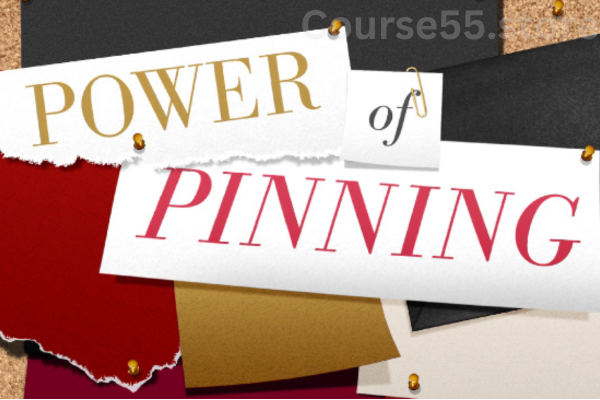

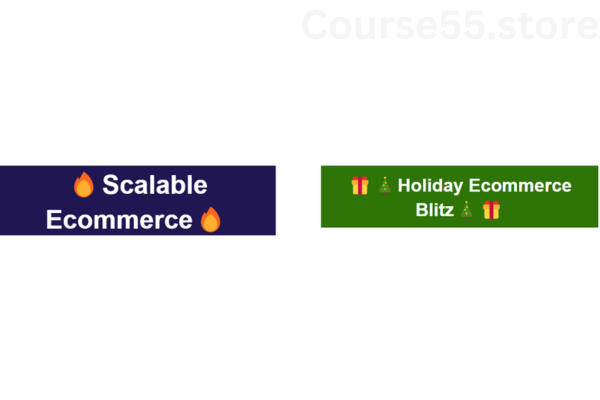
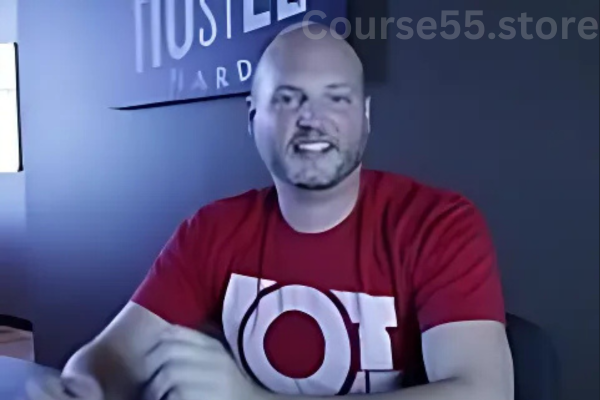

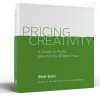
Reviews
There are no reviews yet.